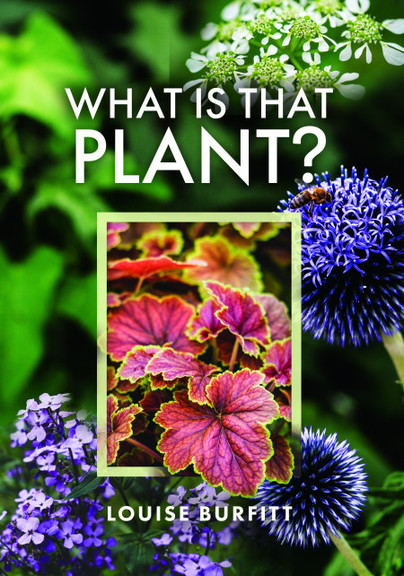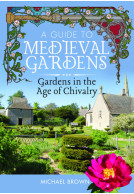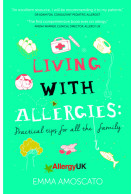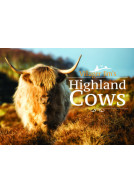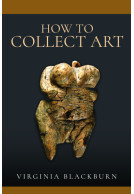What is that Plant? (Hardback)
Imprint: White Owl
Pages: 240
Illustrations: 120 colour illustrations
ISBN: 9781399006163
Published: 15th March 2023
(click here for international delivery rates)
Need a currency converter? Check XE.com for live rates
| Other formats available - Buy the Hardback and get the eBook for £1.99! | Price |
|---|---|
| What is that Plant? eBook (203.5 MB) Add to Basket | £6.99 |
Spring is the most captivating season of the year for both novice and veteran gardeners as green shoots emerge from bare earth, announcing the promise of beautiful blooms to come. But have you ever found yourself crouched beside a flower bed, puzzling over which plants exactly are pushing their way through the soil?
Difficult, but by no means impossible – and this is where this picture-led book, jam-packed with useful information, compelling facts and identification tips for beginners, is at hand. Cataloguing 150 common garden plants found in Britain and Europe, the book covers perennials, flowers, shrubs, weeds and wildflowers as well as a unique section on self-seeding plants, which merrily spread about our gardens and can prove difficult to identify.
As well as satisfying your curiosity, identifying the plants in your outdoor space will help you get the most out of your plot. Without knowing which flowers, herbs, shrubs or weeds you are working with, it is impossible to give your garden or allotment the care it needs to thrive. And even those without the luxury of their own outdoor space will find interesting insights on plant names and origins alongside intriguing historical tidbits in this engaging field guide, from the connection between daffodils and dementia in Wales to the controversial history of the hawthorn tree.
In this comprehensive directory, you’ll find garden plants organised according to type with hands-on advice for identifying the mystery interlopers in your borders, and information about their height, spread, flowering period and toxicity. Discover a wide array of British garden plants, with practical tips for their care and uses.
Rating: 5 out of 5 stars
NetGalley, Joyce Laudon
Novice British and European gardeners, this book is for you. It identifies many common plants that may be popping up starting in the spring time. With its many photos, this book offers a very helpful guide.
The book is organized by plant types. These include Perennial Plants & Bulbs; Self-Seeders & Spreaders; Shrubs, Grasses, Trees & Climbers; and, Weeds & Wildflowers. With more than 150 plants it is a cornucopia of helpful information.
This book does what it says on the tin. It’s a useful guide to help you to identify plants that you are likely to find in UK gardens: valuable to inexperienced gardeners, those who have taken on a new and unfamiliar garden, or perhaps the nosy gardener who spends their time peering over neighbours’ fences asking the titular question: “what is that plant?”
The Cottage Garden Society magazine
Whichever gardener you might be, this book will not only help you answer that pressing question, but also aid in decisions about whether a plant should stay put, be moved to better suit its growing requirements or be ousted from the garden altogether. The ‘perks’ and ‘pitfalls’ sections provided for each plant can assist with some of the more topical issues of gardening, like climate change and biodiversity. Working out if you can keep a particular plant alive through extended periods of drought or whether you are willing to reframe some of those ‘weeds’ as ‘wildflowers’ because their perks outweigh their pitfalls are all debates that this book will help you wrestle with.
Rating: 5 out of 5 stars
NetGalley, Annie Buchanan
What is that Plant? is a well put together beginner friendly plant guide and resource by Louise Burfitt. Due out 28th April 2023 from Pen & Sword on their White Owl imprint, it's 232 pages and will be available in hardcover and ebook formats.
Gardening provides so many positive benefits: exercise, improved mental & physical health, beauty from the scents and colours of the plants we maintain, serenity, distraction from the stresses of a hectic and often confusing daily life. A well maintained garden is a thing of beauty and joy. Identifying the component plants in a garden is not always easy or straightforward. Perhaps a lovely plant has caught one's eye at a garden centre, how to know where to plant and how to care for it in the home garden? This is a useful resource guide to identifying and vetting plants common in gardens in the UK (and elsewhere).
The book is divided into four main sections: perennials & bulbs, self-seeders & spreaders, shrubs grasses trees & climbers, and weeds & wildflowers. Each section contains many individual listings for diverse plant profiles which include: common & botanical (Latin) names, highlighted text box with profile info (flowering season, habit, conditions, origins, toxicity, etc), and a description written in accessible layman language. Every profile listing is also accompanied by one or more unobstructed colour photos showing foliage, blooms, and other features. Pictured varietal names are also included, where applicable. Latin/botanical names follow the newest agreed nomenclature rulings and there were some surprises for me contained in the book (rosemary has been changed from R. officinalis to Salvia rosmarinus, which I, for one, missed the memo).
The author has also included an abbreviated resource and bibliography/links list, vocabulary, and cross referenced index.
Rating: 5 out of 5 stars
NetGalley, Anna Maria Giacomasso
If you love gardening or simply want to learn more about plants this is the right book: informative and easy to follow.
I found a lot of information and it's a perfect reference book.
Highly recommended.
As featured in
The Bookseller, Jan 23
What Is that Plant? Good question, one I ask myself frequently. Many are plants I should know the names of after seeing them for years. I tend to walk by the more common plants without proper scrutiny BUT there is no time like now to learn about them to gain a better appreciation. This book contains 150 plants including perennials, flowers, shrubs, weeds, wildflowers and self-seeding plants in Britain and Europe but many also grow in North America, especially the United States. Are these worth including in your garden or not? Many are invasive; others attract specific birds, butterflies and insects; and still others smell heavenly,
NetGalley, Brenda Carleton
Author Louise Burfitt describes plant characteristics, growth habit and habitat, blooming period if applicable, origin, common names, toxicity, usefulness in any way (or not) and how to spot them. My favourite parts are the perks, pitfalls and did you know? I live and garden in both frigid Zone 2 and beautiful Zone 8 which are worlds apart and this book helps to determine what works best where. There are plants to utilize or discard for every zone, every gardening level. A garden zone map and multiple photographs for identification would be very useful here. But I do like that general photographs are included. Some plants draw bees in droves, others aphids and powdery mildew while others are perfect in flower arrangements and in medications. Many are almost impossible to get rid of once you have them. All this information is extremely helpful to know when planning your own garden. Though I knew that peonies can live for decades, I did not know they can live to 100 years!
This book is incredibly practical, fun, pretty to look at and has inspired me to draw up a list of plants which will grow beautifully in my dry stone walls in the Mediterranean such as Campanula (I did not know it is also called Dalmatian bellflower) and Mexican fleabane as well as drought-resistant plants such as Nigella (also known as Jack in prison!) and even more lavender. Some plants are so invasive they are legally banned. One plant which is new to me is the Mahonia.
If you wish to identify once and for all plants you are very familiar with or if you want to know what to pull out or add to your garden, this book has your name on it.
Rating: 5 out of 5 stars
NetGalley, Leyla Johnson
A lovely book which has photographs and information of 150 plants which are commonly grown in gardens Listed alphabetically, the plants, whilst being identified also has further information on flower, foliage, height., spread, origin, preferred growing condition, toxicity, and "also known as" .
The photos are very useful for quick ID, whilst the added information helps with choice of the plant for the garden. Very helpful book.
Rating: 5 out of 5 stars
NetGalley, Kristina Kalmikova
This was a real treat to read. Fantastic pictorial and very informative description on each plant. I believe I will be using this book for my future foraging and gardening activities. I loved the "perks" section, I found that having extra info on plant benefits was very valuable.
About Louise Burfitt
Louise Burfitt is a writer and translator. Born in London, she now lives in a small village near Oxford. She enjoys growing flowers, fruit and vegetables in her garden, down the allotment and as a volunteer with therapeutic gardening charity Restore. She is especially interested in the benefits of gardening for physical and mental health, and about widening accessibility to gardening.







